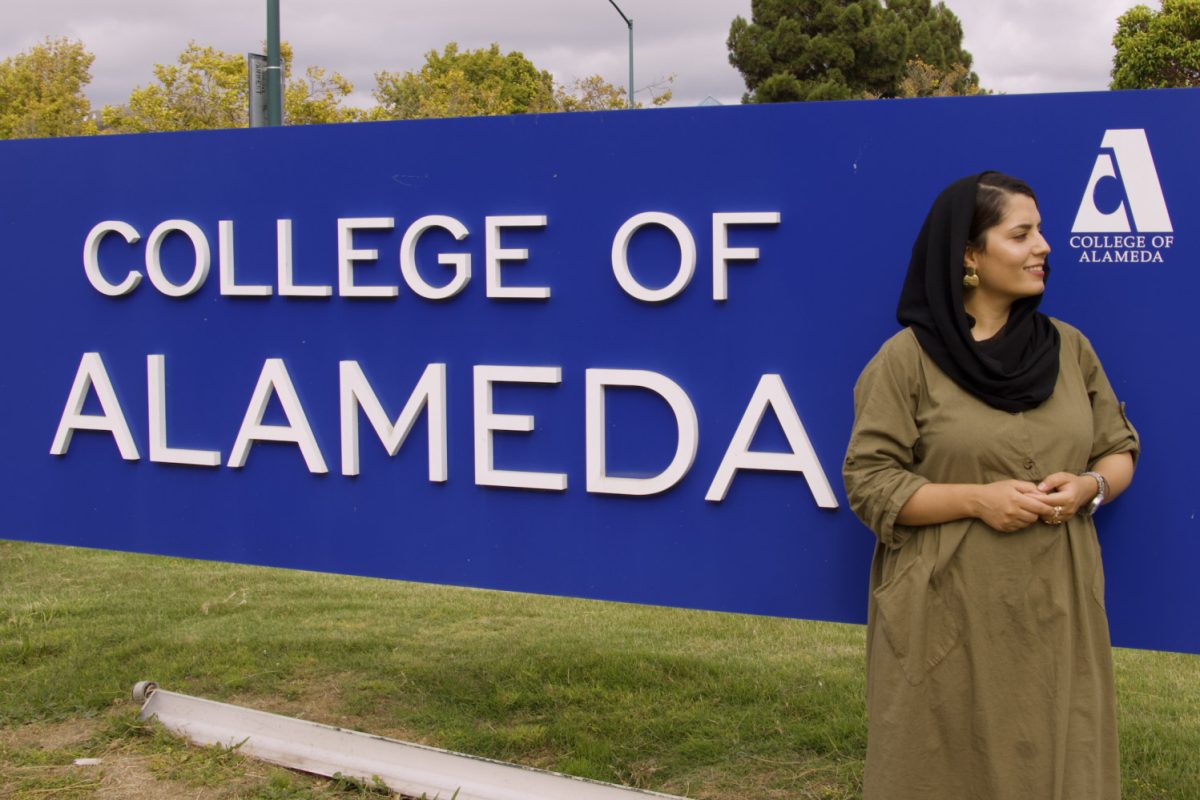While the concept of marketing is generally associated with consumer products such as breakfast cereal and cell phone services, the Peralta Community College District is hoping it will also help attract new students to its four colleges.
Mark Johnson, Peralta’s executive director of marketing, communications & public relations, outlined his updated marketing plan for the board of trustees at its January 5 meeting. Johnson told The Citizen via email that he is now analyzing results for the program and will be “making the case for more ad money in the next fiscal year” which starts on July 1, 2021. The current general fund marketing budget for the Peralta district is $334,866, according to Johnson.
The urgency of reversing the enrollment trend was reinforced during a “study session” conducted for the board of trustees on February 23 by Lijuan Zhai, associate vice chancellor of educational services and institutional effectiveness at Riverside Community College District.
While the number of full-time equivalent students (FTES) declined dramatically over the past year as a result of the pandemic, Zhai looked at five years of enrollment data and concluded the downward trend can be traced back to the fall 2016 semester. Over the past five years, the Peralta district experienced a 25% decline in resident FTES, according to Zhai. The decline was even greater at Laney College, with a 30.6% decline in resident FTES over the same period.
One of Zhai’s preliminary recommendations was coordinated marketing and outreach. She emphasized the importance of coordinating marketing activities at the both the district and college levels to maximize efficiency.
Social media plays an important role in the Peralta marketing program, according to Johnson, with expanded efforts on all the major platforms (Twitter, Facebook, Instagram, LinkedIn and TikTok). During his presentation to the board, Johnson emphasized the growth of the district’s Instagram presence where followers have more than doubled to 2,265. This compares to 3,559 followers on Twitter and 1,841 who “like” the Peralta page on Facebook. Peralta has just 3 followers on TikTok.
Trustee Kevin Jenkins asked Johnson if some of the emerging social platforms such as Clubhouse were being considered and urged him to seek input from students.
Johnson responded by saying “I’m a middle-aged man. I need help knowing where our students are.” Yiru Ni, the new student trustee, offered her assistance to Johnson in this regard.
The use of social media by potential students has been well established. A January 2020 survey of 1,397 US and Canadian high school students by the Academica Group and Glacier found that while use of traditional media channels is “waning,” Gen Z-ers “are most likely to report seeing ads on social media or websites.” Sixty-six % of high school seniors recalled seeing an ad for post-secondary educational institutions on social media compared to only 12% who could remember hearing such an ad on the radio.
Other tactics in the Peralta marketing plan include emails, advertising on SFGate.com, video ads with the Bay Area News Group, and search marketing with Google.
The focus of Peralta’s marketing campaign on the younger demographic does not address one of the key concerns raised in Zhai’s enrollment presentation. According to her analysis, the largest erosion of students in the Peralta district has occurred among those 55 and older. Those in the 55+ age group represented just under 5% of Peralta’s FTES in the fall of 2020. By comparison, that group represented 6.5% of the FTES five years earlier.
Given the diversity of the Peralta student body, Trustee Dyana Delfin Polk encouraged Johnson to explore expansion of the marketing program to include languages other than English (such as Spanish and Chinese). Johnson is considering expanding the Peralta marketing program to non-English outlets starting this Fall.
Rudy Besikof, president of Laney College, told the board that the marketing program for his college already includes outreach in multiple languages and shared that he was recently interviewed on a Chinese-language television station.
The board also expressed concern that the marketing initiatives of the district might interfere with those of the individual colleges. Johnson indicated that he holds a monthly call with the public information officers (PIOs) from each of the colleges to compare notes and make sure the messaging and media placements are not in conflict.
Johnson reported the district moved to the HubSpot platform to centrally manage its marketing and communication efforts. It also adopted Google Analytics as the tool to provide metrics on the success of its campaigns. Board President Cindi Napoli-Abella Reiss asked Johnson to share the campaign data and provide periodic updates on how the marketing program was performing.
Interim Chancellor Carla Walter urged the board to keep in mind “what type of marketing communication we are talking about” pointing out that there are “different kinds and different types” to achieve various objectives. She drew the distinction between a campaign designed to develop broad awareness and recall for Peralta and its colleges and one focused more narrowly on students interested in workforce or dual enrollment.
One of the marketing challenges facing any community college district is dislodging entrenched perceptions about the quality of education they provide.
Jeff Fanter, vice president marketing and communications for Ivy Tech Community College in Indiana, described this challenge in a 2016 interview with The Evolllution, a website focused on non-traditional education.
“There is a perception as to what community college is that maybe comes from a lack of knowledge or lack of understanding. When people think about community colleges, they think, ‘What kind of job could I get with a community college degree?’ or ‘I should only go to community college if I can’t go somewhere else.’”
Fanter went on to point out “that’s not the reality of who our students are or what they accomplish. Our students get good-paying jobs the first year after graduation. In fact, our graduates out-earn many of the four-year institution graduates here in Indiana, including those graduating from the two big four-year institutions, in the first year. That’s because of the types of high-paying careers we train people for.”
Peralta is hoping its new marketing efforts can overcome any such negative perceptions and persuade more prospective students to attend its colleges, either in pursuit of an AA degree or to earn credits that can be transferred to a four-year university.
Story updated on 3/6/21 with additional information from district spokesperson Mark Johnson



























